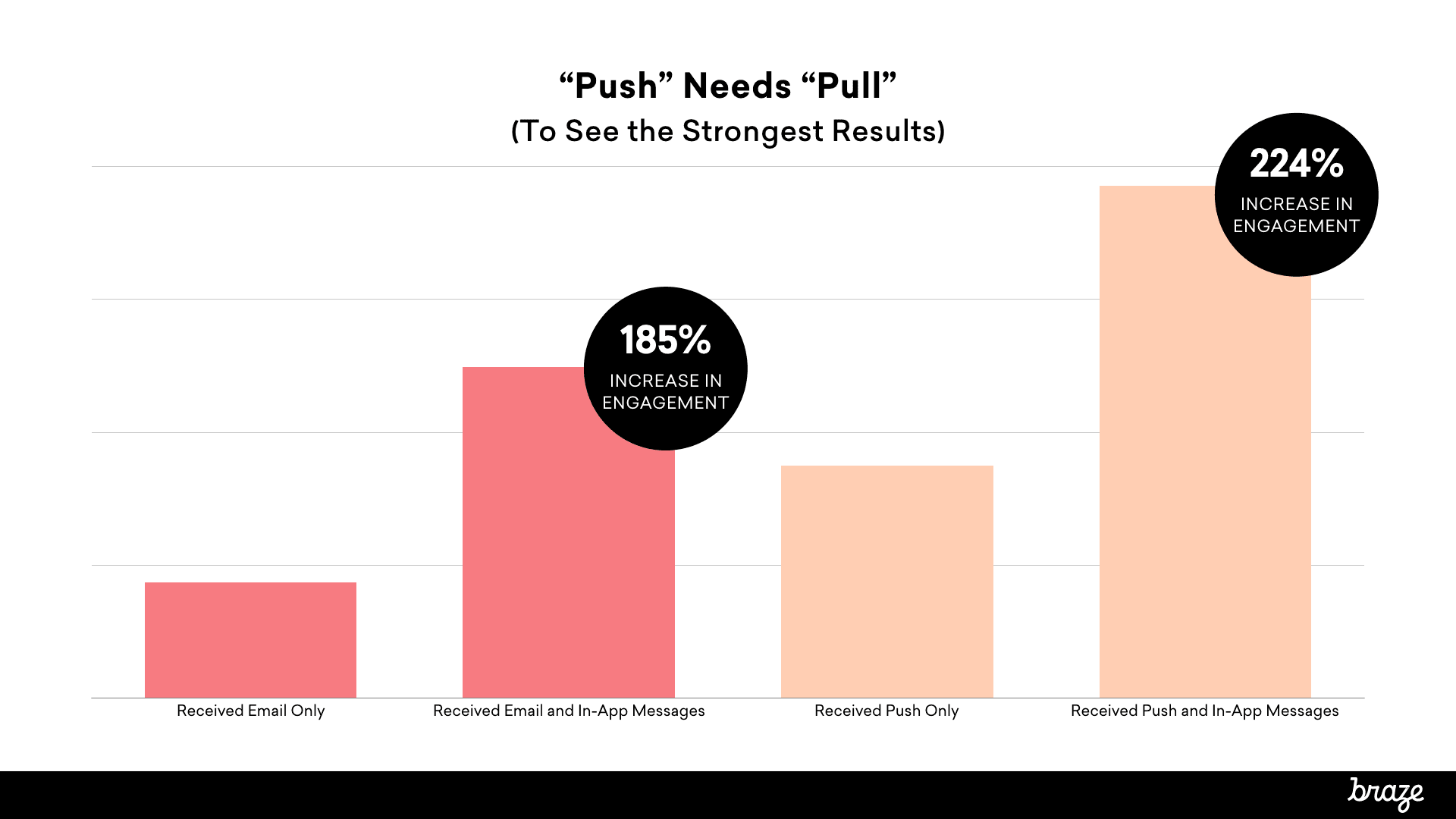The Secret of Push and Pull Messaging
Published on November 22, 2017/Last edited on November 22, 2017/3 min read


Todd Grennan
Content Production Principal, Content Marketing at BrazeIt’s more than ten years out from the launch of the first iPhone, and the rise of mobile devices and other emerging technology platforms has given consumers worldwide a vast assortment of ways to interact with brands online. Email’s still going strong. Push notifications weren’t a thing ten years ago, and now the average person gets more than 60 every single day. And new channels and devices—from OTT messaging platforms to smart speakers and TVs—keep cropping up.
The current landscape has pros and cons for brands. On the plus side, there are now so many more ways for marketers to speak to their companies’ customers. On the other hand, all that bounty has made it a lot harder for any individual brand to grab and hold their customers’ attention. (There’s just too much going on!) That’s wreaking havoc with app retention across the board. Right now, the average person uses less than half the apps on their phone each month—and only about nine on a daily basis.
That raises the central question: how do you get your customers to engage—and stay engaged?
The short answer? You send them messages.
The longer answer? You send them the right mix of “push” and “pull” messages.
Great brand experiences take a little push and pull
Most brands get started with a single channel, hoping to jumpstart engagement and boost loyalty. Usually, that channel is a so-called “push” messaging channel—think email or push notifications—that has the ability to reach customers outside of the brand’s app or website and nudge them to engage.
That’s a smart approach—but it’s just a start.
New research carried out by Braze has found that while “push” channels are powerful tools for juicing customer engagement, they can’t reach their full potential on their own. To get there, marketers need to pair them with with a “pull” channel like in-app messages as part of a cross-channel messaging strategy.

When you take email and send in concert with in-app messages, for instance, users engage at a rate 185% higher than people who receive email alone. The same dynamic plays out with push notifications, where adding in-app messages to the mix was associated with a 224% jump in engagement, compared to users who receive push alone. That’s a major, major lift, one that has the potential to have a significant impact on long-term customer loyalty.
Final thoughts
Want to see results like that? Pairing complementary channels makes it possible.
By using email and push to engage customers beyond the app and leveraging in-app messages to provide important context and guidance once they actually return, you can extend and deepen users’ brand experiences, creating more opportunities to showcase the value that your company provides. Those extra touches can be the difference between a loyal, dedicated customer and a churned one.
Want to dig deeper into the impact that messaging channels can have on engagement? Take a look at Braze’s new Cross-Channel Difference Report.
Related Tags
Be Absolutely Engaging.™
Sign up for regular updates from Braze.
Related Content
View the Blog
The new inbox reality: How iOS changes are reshaping email marketing

Aparna Prasad

Experience optimization: Turning data insights into better journeys

Team Braze

December 2025 Bonfire Marketer of the Month: Jagex’s Emma Oliver
